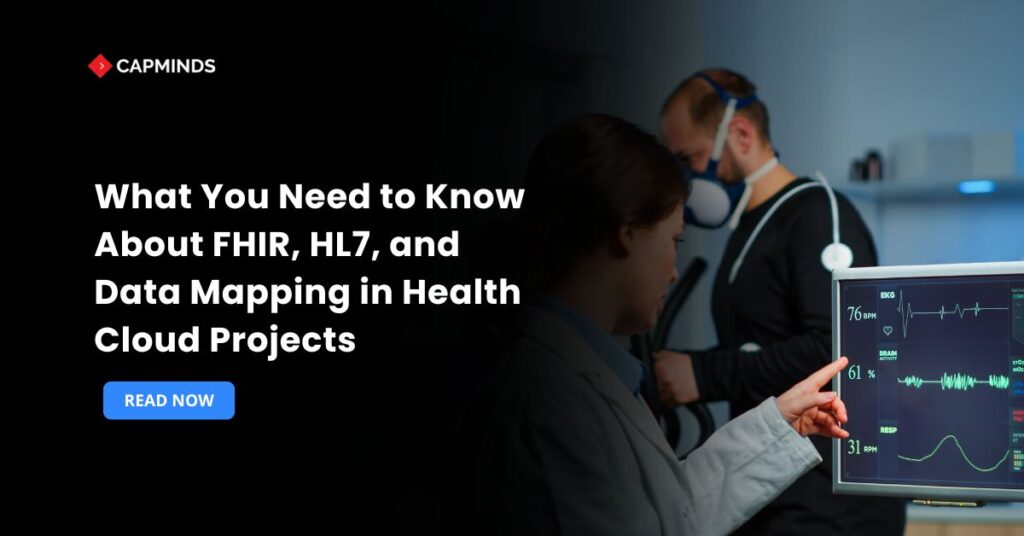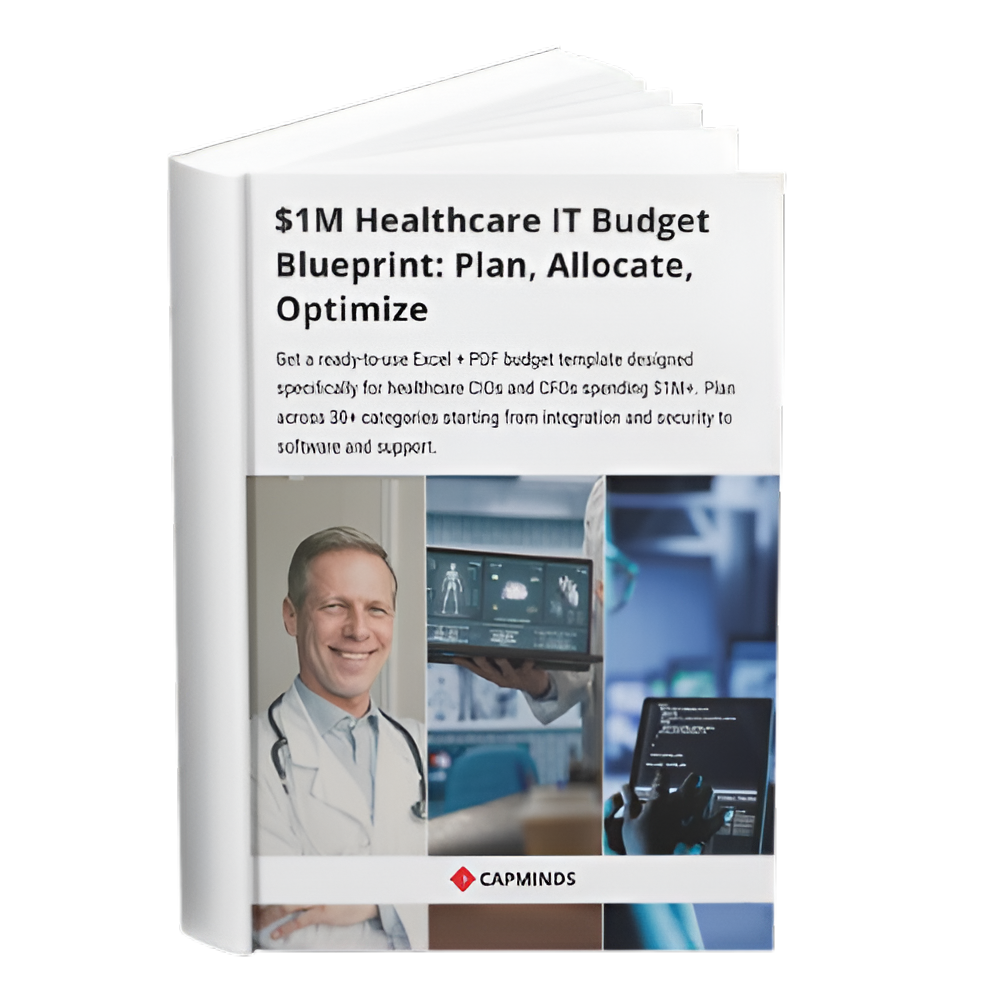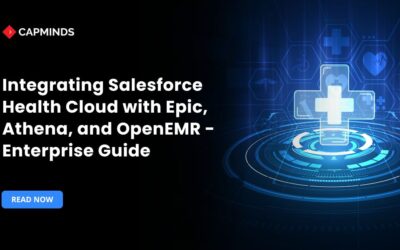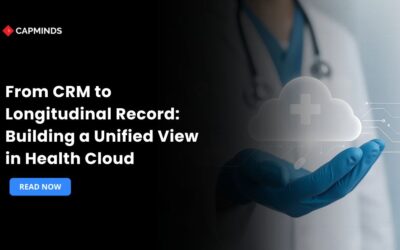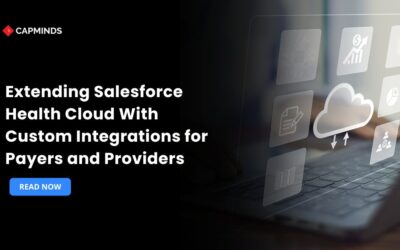What You Need to Know About FHIR, HL7, and Data Mapping in Health Cloud Projects
Interoperability of healthcare data is essential to modern care delivery. However, converting old HL7 communications into patient-centric workflows within Salesforce Health Cloud using FHIR data mapping remains a challenge for many IT teams.
In this blog, you’ll learn about FHIR, HL7, and mapping data in the health cloud projects. You’ll know the fundamentals, identify best practices, and be given the tools you need to create robust Health Cloud integration architectures.
The Significance of Clinical Data Standards
Vital signs, test findings, medications, and billing codes are just a handful of the thousands of data pieces that healthcare institutions exchange every hour. Each system speaks a distinct language if there are no common guidelines for structuring and naming those data pieces.
As a result, revenue teams have to deal with rework, physicians deal with missing documentation, and patients suffer delays. Therefore, clinical data standards are the common grammar of healthcare IT.
They guarantee that an allergy entered into an EHR has the same meaning when it is accessed by a pharmacy system or a customer support representative within the Salesforce Health Cloud.
Standards reduce misunderstandings, facilitate large-scale analytics, and assist value-based care agreements that depend on precise outcome monitoring.
HL7: The Legacy Standard
Healthcare messaging has been powered by HL7 Version 2.x. It makes it easier for billing software, labs, pharmacies, and hospital information systems to communicate with one another. Because of this, HL7 v2.x messages are still widely used in many current EHRs and medical devices.
But the construction of HL7 can be complicated:
- Each message is made up of pieces, such as PID for patient demographics.
- Characters like | and ^ are used to delimit fields.
- Site-specific Z-segments are used in many implementations.
For situations requiring high-throughput messaging, like lab result feeds and ADT notifications, HL7 is still essential despite these peculiarities.
FHIR: The Modern Substitute
Health Cloud’s FHIR data mapping makes use of modern web standards. Because FHIR resources such as Patient, Observation, and Medication are self-descriptive and modular, developers who are accustomed to RESTful APIs will find them easier to use.
Additionally, JSON, XML, and Turtle are among the serialization formats that FHIR supports. Teams may select the best format for their use case thanks to this flexibility:
- JSON for small-scale web apps
- XML for legacy system compatibility
- Turtle for efforts involving connected data
Healthcare companies may expedite Health Cloud integration timeframes and minimize development effort by using FHIR.
FHIR vs. HL7: Key Differences
It’s critical to take into account both technical design and commercial requirements when comparing HL7 to FHIR. We contrast the two in a number of dimensions below.
First off, HL7 v2.x does not have standard resource definitions, but it does provide sophisticated, high-volume communications.
- Design focused on resources with a standard collection of more than 150 healthcare resources.
- Rich metadata, integrated support for terminology bindings, and search parameters.
- Custom fields may be added without compromising core resources thanks to the extension technique.
While HL7 usually depends on batch-style message exchanges, FHIR uses RESTful APIs to enable direct CRUD actions on clinical data. FHIR is therefore frequently preferred by enterprises seeking real-time interoperability.
Data Mapping’s Importance in Health Cloud Initiatives
The distance between Salesforce Health Cloud and source systems is closed via efficient data mapping. Furthermore, it guarantees that clinical data maintains its integrity and significance when it is transferred between platforms.
Data mapping entails:
- Finding the Source Fields – Find out whether EHR or device message fields match Health Cloud objects and fields.
- Establishing Transformation Rules – Convert data types as needed and normalize codes such as ICD-10 and LOINC.
- Managing Optional Extensions – Use FHIR extensions or Health Cloud’s custom objects to add custom characteristics.
When properly implemented, FHIR data mapping in Health Cloud improves analytics and patient interaction capabilities inside the Salesforce ecosystem, in addition to promoting interoperability.
Best Practices for FHIR Data Mapping in Health Cloud
While every project is different, experienced interoperability teams adhere to a few standard practices.
Technical Aspects
- Programs like MuleSoft or Mirth Connect provide both HL7 and FHIR endpoints and offload intricate transformations.
- To reduce downstream customisation, use an industry- or payer-mandated FHIR profile such as US Core or CARIN BB.
- To identify mapping discrepancies before production, use automated schema validation and unit tests during CI/CD builds.
Operations Aspects
- Consult physicians as soon as possible to ensure clinical relevance and unit terminology.
- Completely record conversions for maintenance handoffs and audit trails.
- Dashboards that categorize failures by source feed, error kind, and patient effect can be used to track errors.
Methods for Integrating Health Cloud
Strong data flows and a clearly defined architecture are essential for a successful Health Cloud connection. Here are some important tactics to think about:
- Design for Scalability – Divide data flows and use asynchronous batch processes whenever you can to account for expansion.
- Security and Compliance – Encrypt PHI both in transport and at rest, and enforce OAuth 2.0 for API access.
- Adopt API-led Connectivity – To speed up next initiatives, provide reusable API layers for patient, care plan, and encounter data.
Additionally, you can make the most of capabilities like care coordination, patient 360 views, and patient journeys by aligning your architecture with the Salesforce Health Cloud data model.
Governance for Healthcare Data Interoperability
Interoperability of healthcare data goes beyond technical integration. It necessitates conformity to organizational operations and healthcare data standards.
- Terminology Services – For code validation and translation, integrate with a terminology server such as SNOMED CT or LOINC.
- IHE profiles – Use frameworks for patient identification management that integrate the Healthcare Enterprise, such as PIX/PDQ.
- Governance – Create data governance guidelines that specify clinical data ownership, management, and access restrictions.
Related: From CRM to Longitudinal Record: Building a Unified View in Health Cloud
Unify Your Data, Elevate Your Care with CapMinds
Ready to transform Salesforce Health Cloud into a truly interoperable command center?
With CapMinds, you gain faster claim cycles, fewer manual touchpoints, and the agility to adopt emerging standards like FHIR and HL7 in Salesforce Health Cloud without ripping and replacing core systems. Let’s streamline your workflows, boost ROI, and empower clinicians to focus on what matters most—exceptional patient care.
Our expertise spans:
- FHIR & HL7 Integration – Real-time APIs and high-volume message routing for labs, EHRs, and payer platforms
- Advanced Data Mapping – ICD-10, LOINC, and custom object alignment for a single source of truth
- Health Cloud Implementation – Patient 360, care-plan automation, and payer-provider collaboration accelerators
- MuleSoft & Mirth Connect Orchestration – API-led connectivity with robust transformation logic and monitoring
- Security & Compliance Services – HIPAA-grade encryption, Shield-enabled auditing, and governance frameworks
With CapMinds, you gain faster claim cycles, fewer manual touchpoints, and the agility to adopt emerging standards without ripping and replacing core systems. Let’s streamline your workflows, boost ROI, and empower clinicians to focus on what matters most, exceptional patient care.
Contact CapMinds today to start your interoperability journey.
